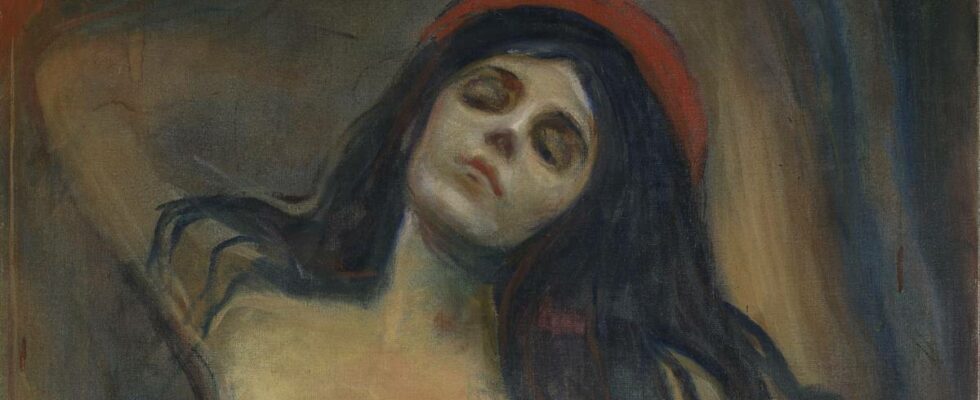Instagram’s rules state that nudity is prohibited, while art in the form of paintings and sculptures is fine. But are they really able to distinguish between art and porn? – Recently it was World Nudity Day, where we thought it would be fun to post some nude paintings painted by Edvard Munch, says communications and marketing director at Munch, Harald Nygaard Kvam. Among other things, they posted this on Instagram: “Naked men in landscape” led to what the Munch Museum believes is “shadowbanning”. Photo: Munch “Nordlandspiken” was part of the same post. Photo: Munch “Substance exchange”. Life and death” was also posted on nudity day. Photo: Munch Thinks they were “shadowbanned” But the post had consequences, says Kvam. He believes that this led to the user of the museum being “shadowbanned”, meaning that it lost reach beyond its own followers. – We see it very clearly on our graph. Usually, the number of followers rises steadily. Suddenly there is an abrupt stop on the day we posted this. Then we didn’t get any new followers for many, many days afterwards, says Kvam. Harald Nygaard Kvam believes Munch was “banned” to the shadows of Instagram. Photo: @Munchmuseet Kvam says he fully understands that Meta has algorithms that prevent sexual content from appearing freely. – But perhaps one could think that one of the world’s richest companies manages to create algorithms that distinguish world-renowned art from ordinary pornography, he wonders. news has for some time tried to get in touch with Meta for a comment, without success. Had advertisements removed The National Museum has also previously faced censorship when they have posted art: – We have experienced having advertisements removed. We have also received warnings about possible account closure due to advertisements with nudity in them, says communications advisor Matias Helgheim. Matias Helgheim has worked with social media for the National Museum for a few years. Photo: Ina Wesenberg / The National Museum – Especially women’s bodies, bare breasts, genitals and that kind of thing have Meta stopped, Helgheim elaborates. But the museum disagrees that the images that have been removed are sexual. “The Holy Family” became too unchristian for Meta. Photo: Frode Larsen / The National Museum – Back to Victorian times Art historian Tommy Sørbø is critical of Meta’s algorithms. – It must be technically possible to separate what is speculative from what has a purely artistic expression, he believes. Art historian Tommy Sørbø believes that it must be possible to separate art from pornography with today’s technology. Photo: Lars Tore Endresen Sørbø has the impression that nudity has become more taboo than before: – It’s almost like you think we’re back to Victorian times. But back then, people put fig leaves where they were afraid of nudity, and now technology is doing the same. Is OnlyFans the solution? Large museums abroad have struggled with this to an even greater extent: Last year there were demonstrations at various museums in New York, and in front of Meta’s offices. The prestigious Leopold Museum in Vienna is currently campaigning against what they believe is censorship: Art by Christian Schad (pictured) and Egon Schiele has been censored by Meta. Photo: Screenshot Together with several other museums in Vienna, they have previously created a user on OnlyFans to show off their art without being deleted. But neither Munch nor the National Museum has plans for the same. This nearly 30,000-year-old sculpture is current on OnlyFans. Photo: STRINGER / AFP Published 29.07.2024, at 07.23
ttn-69
Several museums believe that Meta censors art – news Culture and entertainment

